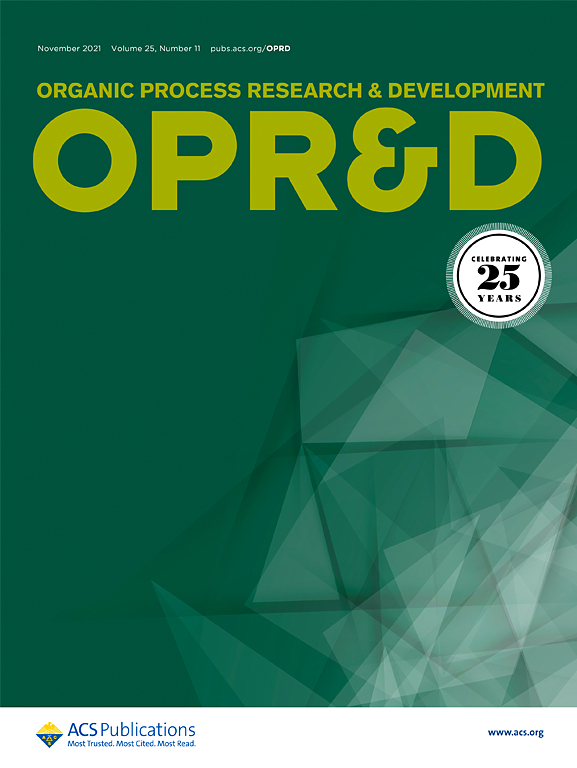Thermally Hazardous 1,3-Dioxolane Coupling Reaction Required for a Pharmaceutical Candidate Starting Material, Made Safer by Employing Process Safety Data as Key Design of Experiments Output Variables
IF 3.1
3区 化学
Q2 CHEMISTRY, APPLIED
引用次数: 0
Abstract
The optimization of a ruthenium-catalyzed catechol, terminal-alkyne coupling reaction to form a key benzodioxolane intermediate toward Lotiglipron is described. This transformation required the use of 3-butyn-2-ol, a valuable yet thermally hazardous reagent. Manual reaction condition optimization delivered a good yield but a poor process safety profile. Further reaction understanding was gained by performing a design of experiments (DoE) screening of relevant reaction conditions while using differential scanning calorimetry output data as well as productivity optimization parameters to strike a balance of process safety and chemical yield. To the best of our knowledge, this work represents the first report of using process safety data as DoE output to guide safe reaction condition selection. Finally, the optimal conditions were demonstrated in a lab-scale flow reactor with good translation of results from the batch reaction.

求助全文
约1分钟内获得全文
求助全文
来源期刊
CiteScore
6.90
自引率
14.70%
发文量
251
审稿时长
2 months
期刊介绍:
The journal Organic Process Research & Development serves as a communication tool between industrial chemists and chemists working in universities and research institutes. As such, it reports original work from the broad field of industrial process chemistry but also presents academic results that are relevant, or potentially relevant, to industrial applications. Process chemistry is the science that enables the safe, environmentally benign and ultimately economical manufacturing of organic compounds that are required in larger amounts to help address the needs of society. Consequently, the Journal encompasses every aspect of organic chemistry, including all aspects of catalysis, synthetic methodology development and synthetic strategy exploration, but also includes aspects from analytical and solid-state chemistry and chemical engineering, such as work-up tools,process safety, or flow-chemistry. The goal of development and optimization of chemical reactions and processes is their transfer to a larger scale; original work describing such studies and the actual implementation on scale is highly relevant to the journal. However, studies on new developments from either industry, research institutes or academia that have not yet been demonstrated on scale, but where an industrial utility can be expected and where the study has addressed important prerequisites for a scale-up and has given confidence into the reliability and practicality of the chemistry, also serve the mission of OPR&D as a communication tool between the different contributors to the field.

 求助内容:
求助内容: 应助结果提醒方式:
应助结果提醒方式:


